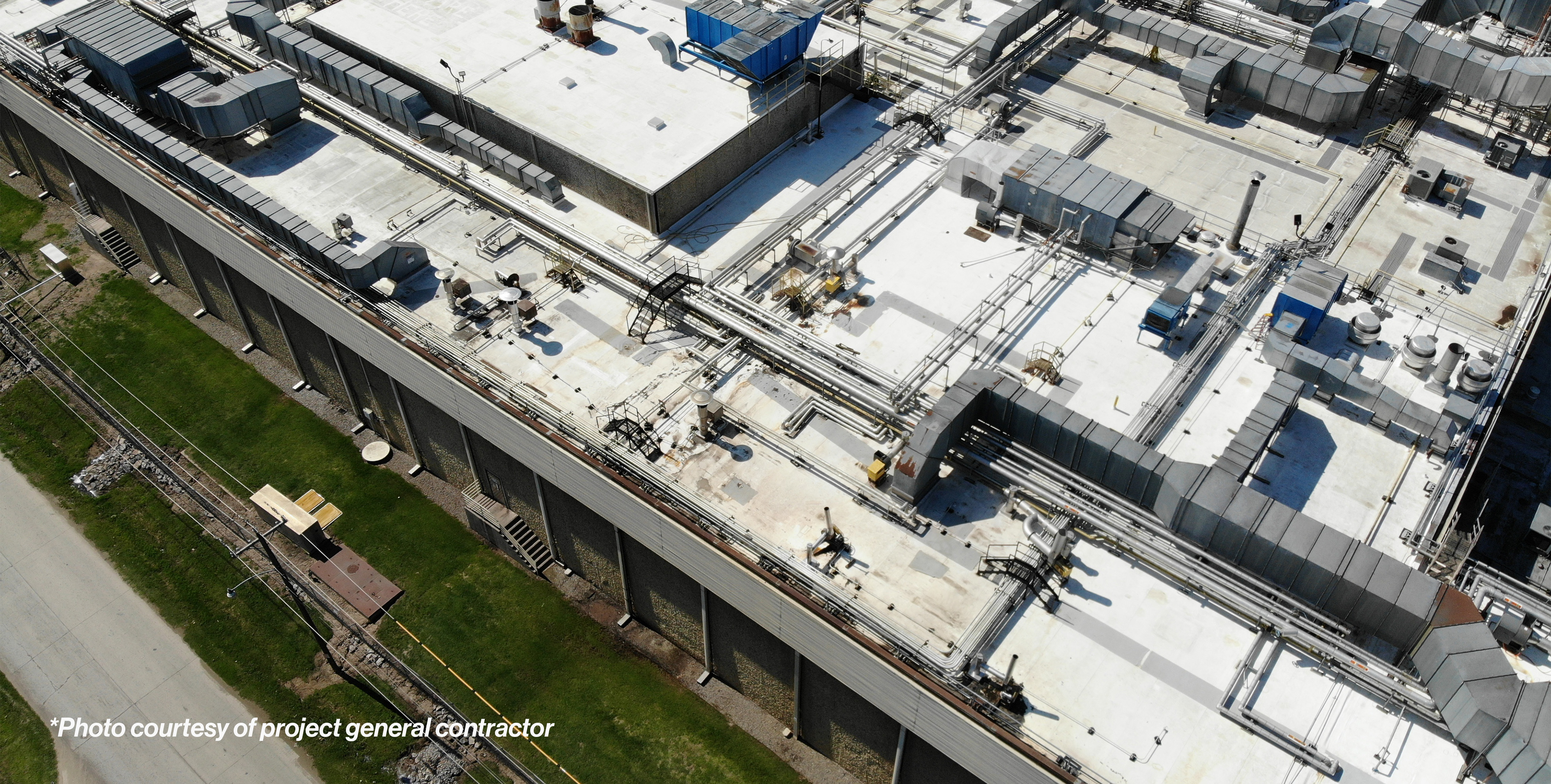When spec developers scout for industrial sites, they tend to zero in on factors related to supply and demand—from the trajectory of local occupancy and rental rates, to the buzz about new occupiers flocking to the market. Retailers, for their part, run analytics, make site visits, and hire local brokers to find just the right industrial real estate to catalyze their supply-chain strategies. But when architects and engineers advise these clients on industrial buildings and sites, they ask a different set of questions. Developers and retailers should learn to think a bit more like these key members of the team.
To understand why, consider the following scenarios…
- A retailer acquires a 35-year-old industrial facility with plans to install an automated warehouse system. When the vendor and architecture and engineering (A&E) team start collaborating on the plans, it turns out one of the roof bays is too low to work with the new equipment. Unless the retailer raises the roof, the plan is a no-go.
- A spec developer builds a ground-up warehouse and distribution center with a structure height that is suitable for both traditional and automated uses. Unfortunately, the developer learns too late that the subcontractor’s concrete pour was too thin and/or too unlevel for heavy, high-precision automation equipment. The developer is in a pickle.
- An developer in the Northeast pulls the trigger on an industrial asset that seems perfect for bioscience labs looking to tap into the local Ivy League-trained employment base. Brokers scare up interested companies, but due diligence uncovers an overlooked detail: For this site, the city cannot provide the high-capacity utility infrastructure required for the labs’ multiple failsafe eye-wash sinks, emergency showers, or power needs.
In each of the cases above—and there are many similar examples—asking the right questions earlier could have saved substantial time, money, and headaches.
Industrial real estate’s rapid evolution
Rapid evolution in the industrial sector makes it even more important to weigh potential constraints related to architecture and engineering, including infrastructure.
The industrial sector has always evolved. Fifty years ago, the clear height for the average warehouse was 18 to 22 feet, because forklifts could lift just two bays high. With time, newer material handling technologies could service four or five bays, necessitating higher roofs.
Today’s automated solutions are pushing the boundaries further. Their AI-driven robotics systems take advantage of both the vertical and horizontal dimensions by relying on complex networks of track and steel. It’s part of the reason structure heights keep heading skyward.
Industrial users are adding to the complexity by redesigning their supply chains with partners that are more geographically, sustainably or economically aligned. As part of these efforts, companies may consider non-traditional industrial sites (in denser urban markets) while still demanding access to cutting-edge equipment.
Meanwhile, new users with different infrastructure needs are increasingly competing for industrial space. In its 2023 Semiconductor Industry Outlook, Deloitte points to the potential for microchip manufacturers, in particular, to “bring manufacturing closer to home with both entirely new fabs and the expansion of existing facilities.” The CHIPS & Science Act’s $24 billion investment tax credit for chip plants could fuel some of this demand.
Lastly, industrial assets are growing more diverse. Giant warehouses in the hinterlands are still part of the mix, but so are non-traditional sites suitable for use by micro-fulfillment centers—everything from a former government building in a downtown business district to a dark store out in the burbs.
Prioritizing flexibility
Against this backdrop, both retailers and developers should consider investing in industrial sites that are capable of accommodating a wider array of users and uses. This could increase the potential pool of lessees and buyers—a plus, not only for spec developers, but also for retail chains.
Having more flexible real estate gives retailers greater latitude to install next-generation equipment or execute strategies such as vacating and selling owned assets or doing subleases and sale-leasebacks.
But achieving flexibility requires thinking harder about factors like structure height, plumbing and electrical capacity, or the strength, thickness and levelness of the concrete slab. Professionals in disciplines such as civil engineering, refrigeration, fire-protection, automation and commissioning can help.
In today’s industrial market, as much as a third of the existing inventory of assets are old and outdated. A&E pros can help clients determine whether a prospective acquisition or retrofit involves too many structural or other limitations. For new construction, they can advise on what it will take to satisfy different users’ present and future needs.
For example, while sizing a pole- or pad-mounted transformer for today’s electrical loads, the developer could also install empty conduits adjacent to the planned secondary path. This relatively inexpensive addition during new construction is like insurance against major paving removal and re-excavation in the event a tenant’s power needs exceed what was planned.
The construction process can benefit from this expertise as well. Industrial A&E teams routinely advise developers on what to include in third-party construction materials testing contracts. One example is a floor-flatness test run soon after a concrete slab pour. If any of the work fails the test, the trades are still on site and can be instructed to tear out the failing panels and try again. Those test results proving that the asset is automation-ready can be included in the marketing materials for the building.
Real estate still matters
None of this is to minimize traditional criteria like labor availability, transportation access or tax rates. In fact, location often is the decisive factor in whether to spend the money to make an industrial asset more flexible. Will a 1 million-square-foot warehouse in the desert need NIMBY-friendly architecture or lab-ready plumbing? Not likely. A 100,000- to 200,000-square-foot facility in a major city could indeed justify (or even require) that extra spending. Its coveted location will attract a wider array of users and boast higher asset value.
Learning to think like architects and engineers can give decision-makers in industrial real estate an edge as the sector continues its remarkable transformation.
####
Marc Jennings is Vice President of Logistics at HFA Architects & Engineers. A licensed architect in Texas, he leads HFA’s Fort Worth studio and brings 25 years of experience in architecture, construction, and development, including industrial real estate; marc.jennings@hfa-ae.com


.png)
.jpg)



.png)
.png)


